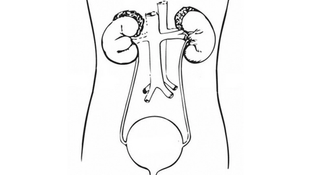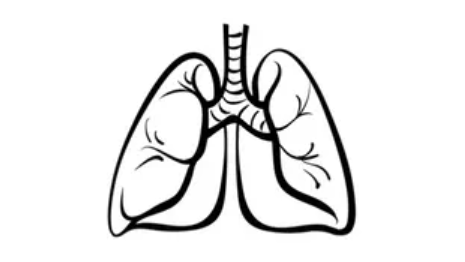Lipson Discusses Treatment Selection, Toxicity, and Duration of IO in Melanoma
During a Case-Based Roundtable® event, Evan J. Lipson, MD, moderated a discussion on the tolerability of immunotherapy in metastatic melanoma and when to stop therapy.
Evan J. Lipson, MD
MODERATOR
Associate Professor of Oncology
Johns Hopkins Medicine
Baltimore, MD

EVENT REGION Maryland and Virginia
PARTICIPANT LIST Daya Sharma, MD | Nelson Kalil, MD | Raj Manchandani, MD | Arun Bhandari, MD | Sekwon Jang, MD | Jackson Gao, MD | David Weng, MD | M. Kelly Hagan, MD | Bill Gai, MD | Ligeng Tian, MD | Jose Mendoza, MD | Kumar Abhishek, MD
CASE SUMMARY
A man aged 78 years with a history of stage III melanoma underwent surgical resection 12 years ago. On routine follow-up, the patient presented with moderate asthenia that limited his daily activities. His ECOG performance status was 1, and his physical examination was unremarkable. Notable laboratory findings included a lactate dehydrogenase level of 380 U/L (reference range, 110-240 U/L). A full-body CT scan revealed pulmonary and hepatic nodules, but MRI showed no evidence of brain metastases. He underwent a core needle biopsy of the largest hepatic lesion in segment IVb without any complications. Pathology findings revealed metastatic melanoma, and mutation testing results showed it was negative for BRAF mutations.
DISCUSSION QUESTION
- What has your experience been with giving relatlimab and nivolumab (Opdualag)?
SHARMA: I tried it on a patient in the second line after the patient progressed on ipilimumab [Yervoy] plus nivolumab [Opdivo] since there is a 9% overall response rate [ORR], but the [disease] did not respond.
LIPSON: That’s true. There’s a low but real ORR. It’s approximately 10%, but you’re right.1 If somebody experiences progression on PD-1 or PD-1 and CTLA-4, it’s a low likelihood, but not zero, that they would respond to nivolumab plus relatlimab.
KALIL: I have experience. It was in the front line, not second line, and it was excellent [and] the tolerance is excellent.… We have a very proactive population. I’ve had patients come and say they want just 1 drug, and back then [that option] was pembrolizumab [Keytruda], and then came [ipilimumab/ nivolumab], and then nivolumab/relatlimab. So, I offer all 3 options, and you [should] offer and then make the decision together. They need to feel confident that they are the ones making decisions. So, the experience is excellent. I don’t have any issues in terms of major toxicity, other than when you use ipilimumab and nivolumab or if there’s a different situation [such as] somebody with chronic obstructive pulmonary disease or underlying lung disease, but other than that, [I have had] no major issues at all.
MANCHANDANI: I’ve tried to start a patient… she was 80 years old with a high disease burden. I tried to convince her [to receive] nivolumab/relatlimab, but she did not agree with that and was given ipilimumab/ nivolumab. She had a tough time with the first treatment, but after that, she did well and had a very good response.
BHANDARI: I have 2 patients I gave it in the front line. Both have excellent responses. One patient developed adrenal insufficiency almost 6 months later. At that point, blood pressure was very low, and I sent them to an endocrinologist. They were on steroids, still having fatigue, and I had to stop after 9 months. They had a complete remission, [and disease was] completely gone, so tolerability can be an issue. The other patient also has a similar issue. One was aged 78 or 79 years but had an excellent response, and they are in remission for more than a year.
LIPSON: Yes, we do see that adrenal insufficiency. Fortunately, it’s uncommon. Unfortunately, it’s usually permanent. The fatigue is real. We try to modulate the doses of hydrocortisone that patients are on until we get it just right so they’re feeling back to baseline. But even then, patients often don’t feel completely like usual.
JANG: We’ve treated approximately 100 patients at Inova [Schar Cancer Institute]…and we recently published real-world data. In PD-1–naive patients, we saw a 58% ORR; in PD-1–treated patients, we saw a 33% ORR [From the Data2]. I think the [RELATIVITY-020 trial (NCT01968109)] reporting 10% [consisted of] an immune desert patient population. For people who just developed progression on single-agent PD-1 or develop recurrence during or shortly after a PD-1, I think there can still be patients responding to relatlimab/nivolumab. This is one of the areas where we need more data.

LIPSON: No doubt about it. I was pleased to read your real-world report about that. That was encouraging. The ORR and outcomes were great, for those who haven’t seen it.
DISCUSSION QUESTION
- What types of patients are you on the fence about regarding whether to use IO (immunotherapy) monotherapy or dual IO therapy?
- How do you decide for these patients?
GAO: [It is] based on performance status. If it’s an ECOG performance status of 2 or above, I would use single agent. Otherwise, I may use ipilimumab/nivolumab.
WENG: I don’t use single agent. If I’m worried about performance status, I’ll use the relatlimab/nivolumab combination.
MANCHANDANI: Do you take PD-L1 expression [into account], such as using pembrolizumab as a single agent in a high expresser?
LIPSON: That’s a great question. I do not. The NCCN recommends that we do not.3 That is not true across the board, though. Some of our colleagues use it as a soft marker of more or less aggressive [treatment], but I do not use it as a marker.
Dr Hagan, beyond caregiver support, what factors might make you recommend single vs dual agent?
HAGAN: [I would use single agent if they are] frailer, older, timid, or somebody who tells me, “[Single-agent pembrolizumab] is what Jimmy Carter got, so I’ll do that.” I don’t often use single agent, though.
JANG: Desmoplastic melanoma is one of the subtypes that has a very high response rate to single-agent PD-1 antibody. In terms of subtypes of melanoma, for desmoplastic, you can start with single-agent PD-1 and then use the combination for people who don’t respond.
LIPSON: I’m right there with you. Desmoplastic is a particularly hot subtype of melanoma with lots of T-cell infiltration. As Dr Jang says, the response rates in desmoplastic to single agent are extraordinarily high, something in the 70% [range].4 For little in-transit metastases on a scalp for an older patient with poor performance status, I think a single agent is appropriate there. But I don’t use a ton of single agent either; occasionally, but not often.
GAI: [Do you have] any comments and recommendations for mucosal melanoma?
LIPSON: Dr Jang gave you one side of the spectrum in terms of response. Mucosal is the opposite side. It’s not as bad as uveal melanoma, but it’s tricky to treat, so we generally use dual agent, often full-dose ipilimumab/nivolumab. The same is true of the acral melanomas.
TIAN: Which regimen would you use? Do you use ipilimumab/nivolumab or nivolumab/relatlimab for mucosal melanoma?
LIPSON: There are data for both. The data are more solid for nivolumab/ipilimumab, which is generally what I use, but there are some data that nivolumab/relatlimab improved in those subtypes over nivolumab by itself.5,6 I use dual agent in almost every patient with mucosal melanoma. The choice of which dual-agent regimen I use often comes down to comorbidities and performance status.
MENDOZA: In those cases, have you been able to use ipilimumab, nivolumab, and relatlimab as a triplet combination?
LIPSON: There was a trial that we did with the triplet specifically [RELATIVITY-048 (NCT03459222)]. It was low-dose ipilimumab plus nivolumab plus relatlimab, and it was reasonably well tolerated. There was a [grade 3 or 4] toxicity rate of 39%.7 It was a small study, and despite having a decent response rate [59% investigator-assessed confirmed ORR], it’s just not clear which patients need all 3 pathways blocked. The data do support the efficacy of blocking all 3.
In practice, the way that works for me is that I’ll use one combination, and if somebody has progression on that combination, I will quickly switch them to the other combination. Because these medicines stick around in the body for so long…the patient’s body is seeing all 3 antibodies at the same time. I don’t generally give all 3 at once, but I will give one combination and quickly switch to the other combination.
DISCUSSION QUESTION
- How has your comfort level in managing immune-related adverse events in the setting of metastatic melanoma changed over time?
LIPSON: Dr Tian, do you think you’re more comfortable these days managing these immune-related events than you were 3 or 4 years ago?
TIAN: Absolutely. I’m seeing more of the toxicities, and I work more with my rheumatologist and neurologist, and the more I give them, the more experience they have…. Seeing that more is helpful. [Patients are] not just getting steroids. They use infliximab [Remicade], and they use [other effective drugs]. [I have seen patients] develop myositis, even mimicking encephalitis and those kinds of symptoms, [which is] very scary, but it does make me more comfortable these days.
LIPSON: The myositis is a tricky one, and it’s made even more complicated because sometimes it will show up with another 2 toxicities, myocarditis and myasthenia gravis. They call it the terrible triad.
TIAN: This specific patient had both myasthenia gravis and myositis. I did have [another] patient with cardiomyopathy…. I’m very cautious and very humble seeing all those toxicities now.
LIPSON: The myocarditis is nothing to sneeze at, for sure. Dr Abhishek, what about you? Are you more comfortable these days managing these toxicities than you were 3 or 4 years ago?
ABHISHEK: The more you manage, the more comfortable you become. It doesn’t mean you take it for granted that immune-related adverse events are all equal. But you do build a level of comfort that you can handle it. With immunosuppressive therapy, we are getting more comfortable, but you do see some severe toxicities that scare you.
KALIL: Dr Lipson, [in terms of] duration of therapy with nivolumab/relatlimab, do you have any thoughts about still [giving it] as long as it’s working or to progression?
LIPSON: I’ll tell you the 3 times that I stop therapy. When somebody has had a true complete response, that’s the best. [If] we give them a year of therapy, they get a couple of PET scans spaced out by 12 weeks or 4 months, and you show definitively that you can’t see any disease. With a true complete response, I stop therapy as long as it’s been approximately a year.
The second is that duration of therapy often depends on the toxicity profile. When somebody has had a life-threatening grade 4 toxicity, for example, those who get serious toxicities are the patients who are more likely to have antitumor responses. Often, you have to stop the therapy because it’s dangerous to continue. We find ourselves stopping therapy in that context.
The third, and this happens probably least commonly, is when somebody gets to the 2-year mark. At the 2-year mark, a couple of things are possible. One is that you do a scan, and you’re pretty certain they don’t have anything else you’re treating. We often will discuss stopping therapy at a 2-year mark because that was what the trials typically did. Then there are the patients at 2 years who, for whatever reason, still have something that is hot on the PET or that you can see on a CT scan, and you’re concerned there might be disease left behind. In rare cases, I have gone past 2 years out to 3 or 4, rarely even 5 years of treatment.
ABISHEK: What’s the fall off from 2 years’ stoppage? What proportion of patients is going to fall off in terms of progression of disease?
LIPSON: [We have] the 10-year data from the phase 3 CheckMate 067 study [NCT01844505]. If you get somebody to 3 years, the likelihood that they’re going to continue to do well is high.8 The [Kaplan-Meier] curves flatten out nicely after about 3 or 3.5 years. It’s not a guarantee, but what I tell patients is that once you’ve made it to 3 years, the likelihood you’re going to make it to 5 and 10 years is reasonable. In terms of the falloff, there is a small percentage of patients where, even if they make it out that far, somehow the disease finds a way to grow at year 5 or year 6, but it’s unlikely.
REFERENCES
1. Ascierto PA, Lipson EJ, Dummer R, et al. Nivolumab and relatlimab in patients with advanced melanoma that had progressed on anti–programmed death-1/programmed death ligand 1 therapy: results from the phase I/IIa RELATIVITY-020 trial. J Clin Oncol. 2023;41(15):2724-2735. doi:10.1200/JCO.22.02072
2. Thakker S, Belzberg M, Jang S, Al-Mondhiry J. Real-world treatment patterns and outcomes of patients with advanced melanoma treated with nivolumab plus relatlimab. Oncologist. 2024;29(12):e1783-e1785. doi:10.1093/oncolo/oyae248
3. NCCN. Clinical Practice Guidelines in Oncology. Melanoma: cutaneous, version 1.2025. Accessed January 9, 2024. https://tinyurl.com/ycyhfyfv
4. Eroglu Z, Zaretsky JM, Hu-Lieskovan S, et al. High response rate to PD-1 blockade in desmoplastic melanomas. Nature. 2018;553(7688):347-350. doi:10.1038/nature25187
5. Shoushtari AN, Wagstaff J, Acierto PA, et al. CheckMate 067: long-term outcomes in patients with mucosal melanoma. J Clin Oncol. 2020;38 (suppl 15):10019. doi:10.1200/JCO.2020.38.15_suppl.10019
6. Tawbi HA, Hodi FS, Lipson EJ, et al. Three-year overall survival with nivolumab plus relatlimab in advanced melanoma from RELATIVITY-047. J Clin Oncol. Published online December 13, 2024. doi:10.1200/JCO.24.01124
7. Ascierto PA, Dummer R, Gaudy-Marqueste C, et al. Efficacy and safety of triplet nivolumab, relatlimab, and ipilimumab (NIVO + RELA + IPI) in advanced melanoma: results from RELATIVITY-048. J Clin Oncol. 2024;42(suppl 16):9504. doi:10.1200/JCO.2024.42.16_suppl.9504
8. Wolchok JD, Chiarion-Sileni V, Rutkowski P, et al; CheckMate 067 Investigators. Final, 10-year outcomes with nivolumab plus ipilimumab in advanced melanoma. N Engl J Med. 2025;392(1):11-22. doi:10.1056/NEJMoa2407417
















